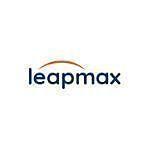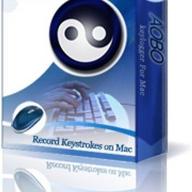Employee Monitoring
Ensuring Privacy in Employee Monitoring for Customer Service
Employee monitoring is a valuable practice for optimizing customer service operations. However, it is essential for organizations to consider privacy implications when implementing monitoring systems. Respecting employee privacy is crucial to maintaining trust and promoting a healthy work environment.
Transparency and Consent
Prioritizing transparency and obtaining informed consent from employees are fundamental steps in addressing privacy concerns. Organizations should clearly communicate their employee monitoring policies and practices, ensuring that employees understand the purpose, scope, and methods of monitoring. Obtaining explicit consent through written agreements or policies helps create a culture of trust and openness.
Data Collection and Usage Limitations
When implementing employee monitoring tools in customer service, organizations must establish clear limitations on data collection and usage. It is crucial to collect only the necessary data directly related to work performance and customer interactions. Avoiding the collection of personal or sensitive information unrelated to work helps protect employee privacy while still enabling effective monitoring.
Anonymization and Aggregation
Anonymizing and aggregating data are effective techniques for balancing employee privacy with monitoring needs. By removing personally identifiable information and grouping data at a broader level, organizations can analyze trends and patterns while preserving individual privacy. This approach ensures that employee monitoring focuses on overall performance evaluation rather than individual scrutiny.
The Benefits of Employee Monitoring in Customer Service
Performance Improvement and Training
Employee monitoring provides valuable insights into customer service performance, allowing organizations to identify strengths and areas for improvement. By analyzing interactions, response times, and customer satisfaction levels, organizations can offer targeted training and coaching programs to enhance employee skills and performance. This leads to a more efficient and effective customer service team.
Quality Assurance and Compliance
Monitoring customer service interactions ensures quality assurance and adherence to compliance standards. By reviewing recorded calls, emails, or chats, organizations can identify any deviations from established procedures or policies. This enables timely feedback and corrective actions, ensuring consistent service quality and compliance with regulations, which ultimately enhances customer satisfaction and trust.
Employee Monitoring Tools for Improving Customer Service Productivity
Real-time Performance Metrics
Employee monitoring tools provide real-time performance metrics, allowing supervisors and managers to monitor customer service activities as they happen. Live dashboards and performance indicators help identify bottlenecks, monitor response times, and ensure prompt issue resolution. This timely visibility enables swift decision-making and proactive management of customer service workflows.
Automated Workforce Analytics
Modern employee monitoring tools offer automated workforce analytics capabilities, allowing organizations to gain actionable insights from vast amounts of data. By leveraging machine learning algorithms and data visualization, these tools can identify trends, patterns, and performance outliers. These insights empower organizations to make data-driven decisions for process optimization, resource allocation, and employee development.
In conclusion, privacy considerations play a vital role in the implementation of employee monitoring systems for customer service teams. Organizations should prioritize transparency, consent, and responsible data usage to maintain employee trust. Simultaneously, employee monitoring brings numerous benefits to customer service operations, including performance improvement, quality assurance, and enhanced productivity. Leveraging advanced monitoring tools further enables real-time performance metrics and automated analytics, facilitating proactive management and data-driven decision-making.


1 Review
PukkaTeam is an always-on, online workplace designed for remote teams to work together throughout the day and feel more connected, no matter where they are.


1 Review
VirtualLogger LLC provides call recording, quality monitoring, post-call surveys and e-coaching technology to contact centers on a hosted basis. Our "pay as you go" approach is designed to dramatically reduce the cash investment required for recording and QA systems and related technology. In addition, because we maintain the database and application…
Read more about this company

1 Review
Using the best of AI, Leapmax – a Work From Home Solution, houses feature sets that can ensure the productivity, security and efficient management of a remote workforce from one integrated platform.


1 Review
Aobo Keylogger for Mac OS X is a parental control and employee monitoring app.
- Employee monitoring software refers to a type of tool or application that allows employers to track and monitor the activities of their employees in the workplace. It helps organizations collect data on employee performance, productivity, and adherence to company policies.
- Organizations use employee monitoring software for various reasons. It helps enhance productivity, identify inefficiencies, ensure compliance with company policies, monitor employee performance, and protect sensitive information. It also assists in detecting and preventing insider threats, data breaches, and other security risks.
- Employee monitoring software can track a wide range of activities, including but not limited to internet and computer usage, email communications, file transfers, application usage, keystrokes, screen captures, and time tracking. The specific activities monitored depend on the features and capabilities of the software.
- The legality of employee monitoring software depends on the jurisdiction and applicable laws. In many countries, employers have the right to monitor employee activities within certain boundaries. However, it is important for organizations to comply with local labor laws, data protection regulations, and employee privacy rights when implementing monitoring software.

